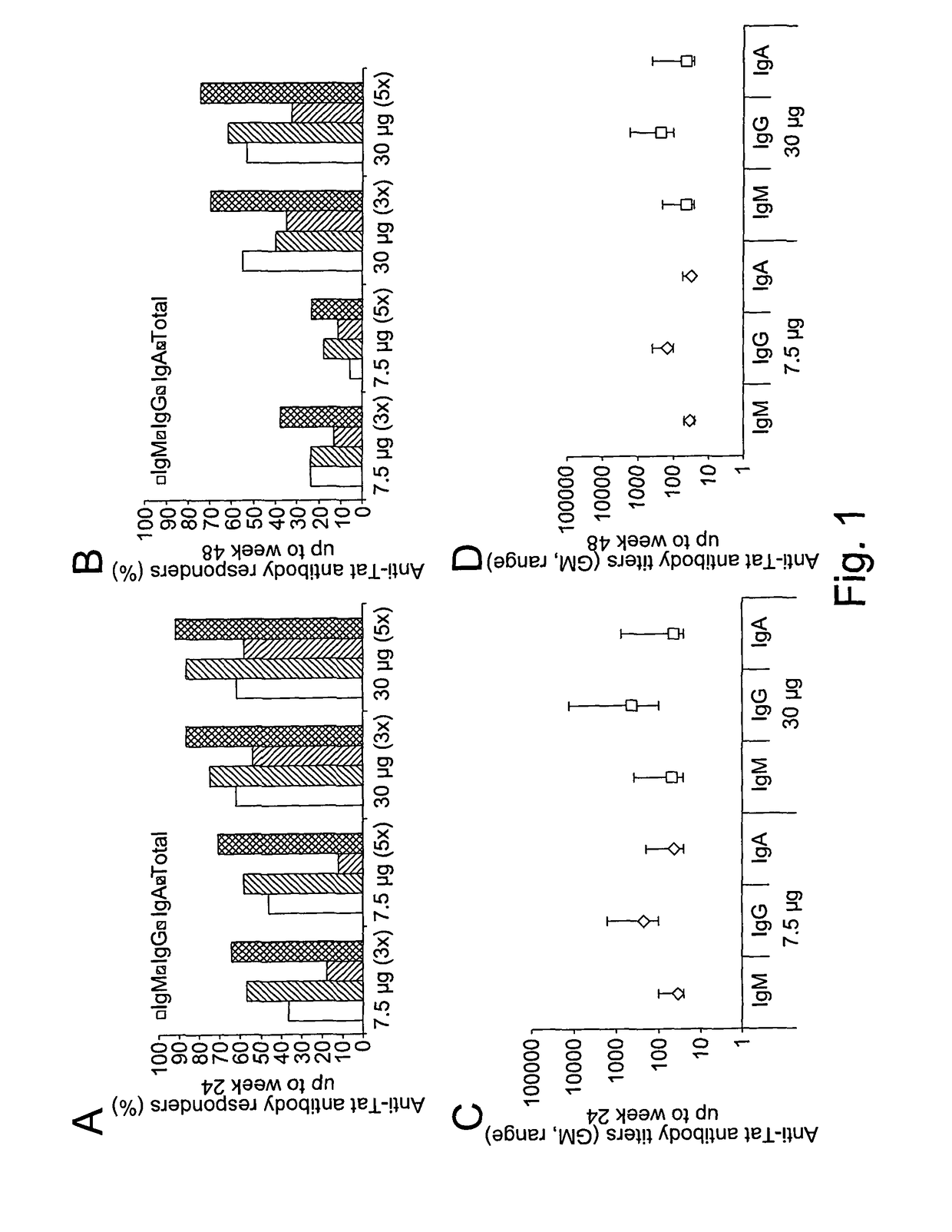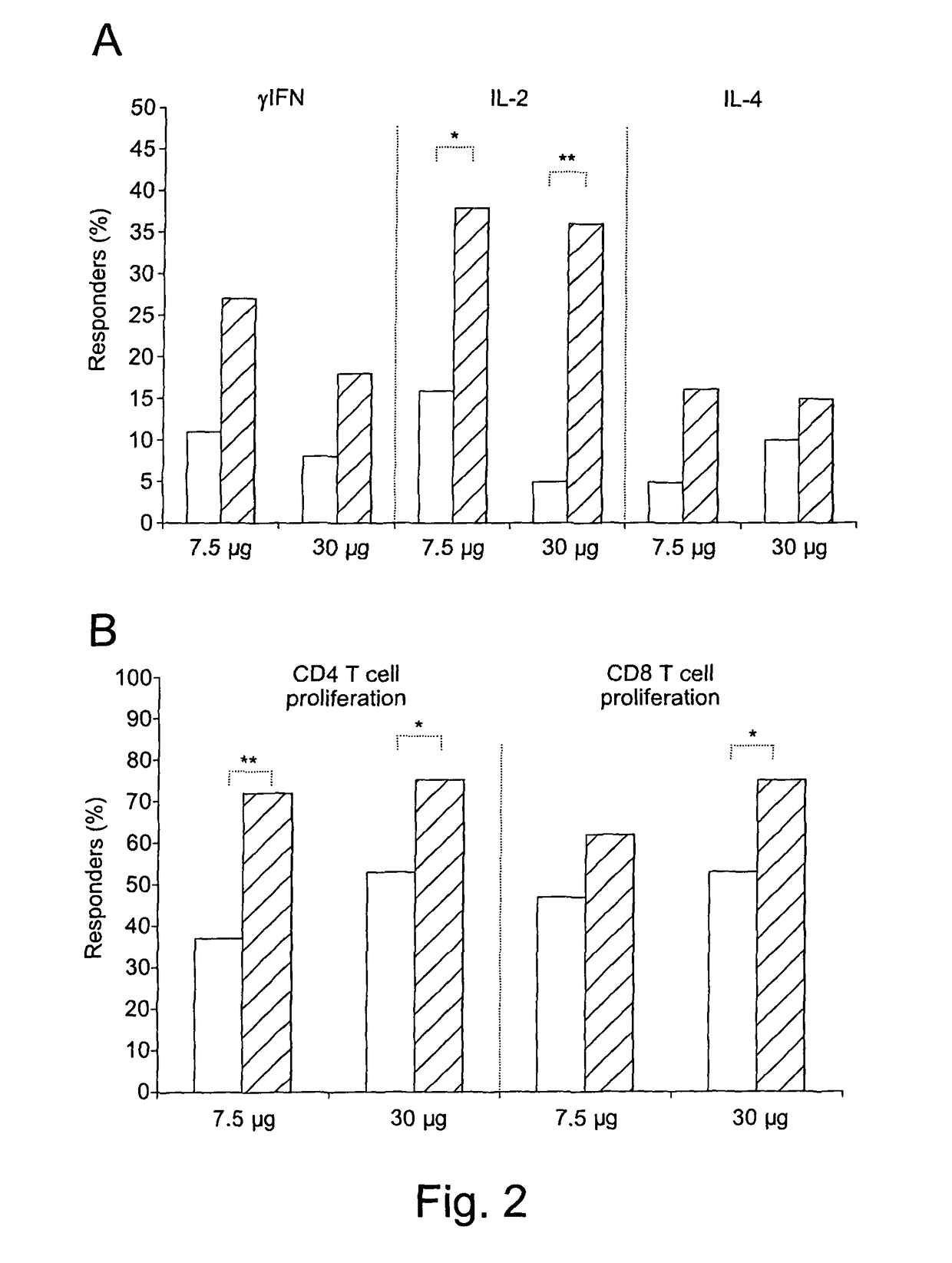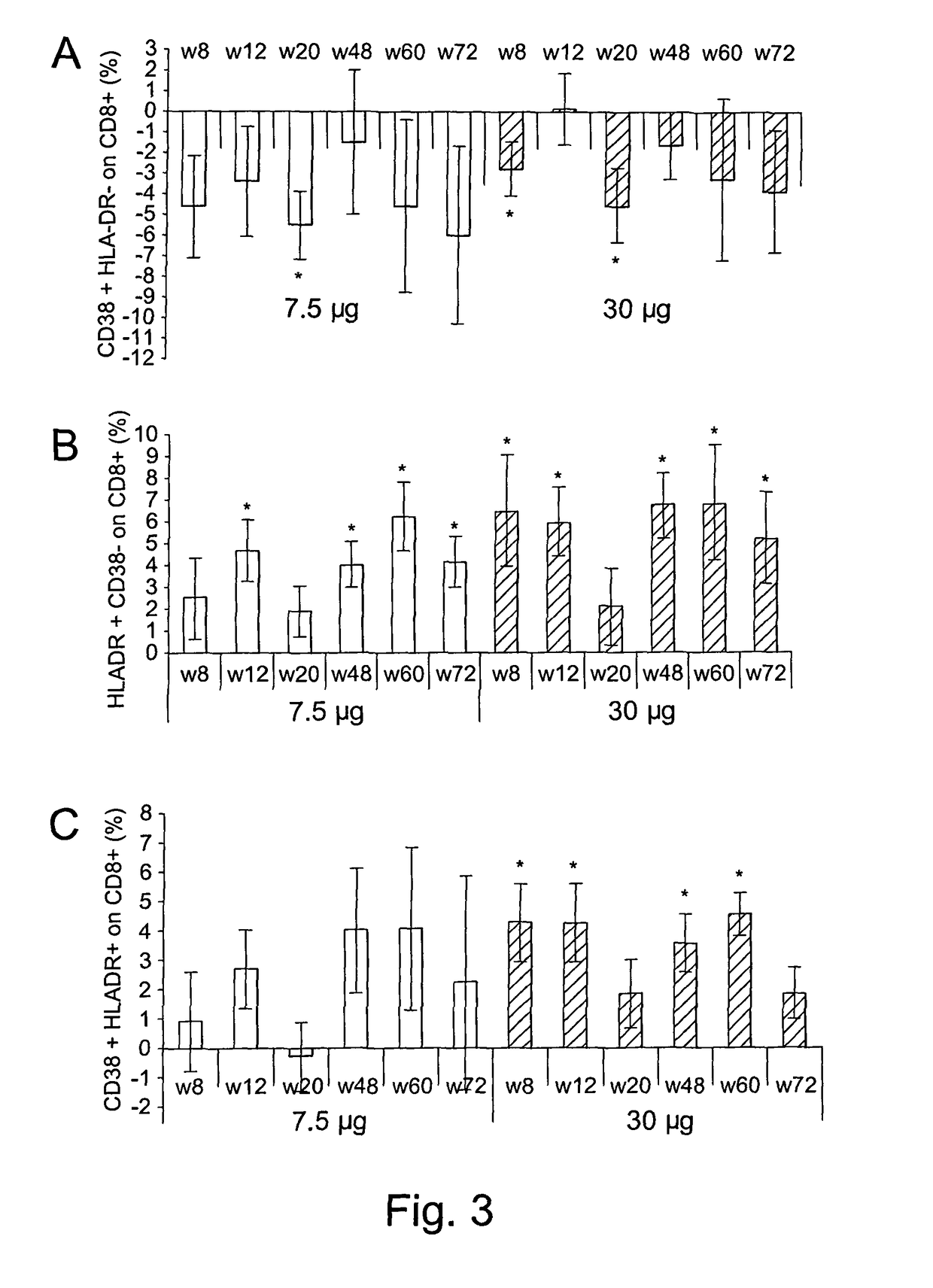Method of improving immune function in HIV-infected subjects on HAART by administering HIV-1 TAT
a technology of immune function and hiv-1, which is applied in the field of improving immune function in hiv-infected subjects on haart, can solve the problems of no known means to re-establish immunity against recall antigens, increase the risk of non-aids defining illnesses and causes of death, so as to enhance the therapeutic reduce the need for drugs, and enhance the effect of an env vaccin
- Summary
- Abstract
- Description
- Claims
- Application Information
AI Technical Summary
Benefits of technology
Problems solved by technology
Method used
Image
Examples
examples
Methods
Study Design (T-002 and OBS T-002)
[0216]The therapeutic phase II study is a randomised, open label clinical trial of the recombinant, biologically active, HIV-1 Tat protein in anti-Tat antibody negative, HIV-1 chronically infected adult subjects of either gender, 18-55 years of age, with HAART-suppressed HIV-1 replication (levels of plasma viraemia + T cells counts ≧200 cells / μL. This study was directed at evaluating the immunogenicity (as a primary end-point) and the safety (as a secondary end-point) of the therapeutic immunisation based on the biologically active Tat protein (ClinicalTrials.gov n. NCT00751595), and it is conducted in the following 11 clinical centres in Italy: Policlinico of Modena; S. Raffaele and Sacco Hospital, Milan; Amedeo di Savoia Hospital, Turin; “Spedali Civili”, Brescia; Arcispedale S. Anna, Ferrara; S. Maria Annunziata Hospital, Florence; IFO-San Gallicano, Rome; Policlinico of Bari, Bari; S.M. Goretti Hospital, Latina, Azienda Ospedaliera S. Ger...
PUM
| Property | Measurement | Unit |
|---|---|---|
| drug resistance | aaaaa | aaaaa |
| oxidative stress | aaaaa | aaaaa |
| virus-drug resistance | aaaaa | aaaaa |
Abstract
Description
Claims
Application Information
 Login to View More
Login to View More - R&D
- Intellectual Property
- Life Sciences
- Materials
- Tech Scout
- Unparalleled Data Quality
- Higher Quality Content
- 60% Fewer Hallucinations
Browse by: Latest US Patents, China's latest patents, Technical Efficacy Thesaurus, Application Domain, Technology Topic, Popular Technical Reports.
© 2025 PatSnap. All rights reserved.Legal|Privacy policy|Modern Slavery Act Transparency Statement|Sitemap|About US| Contact US: help@patsnap.com



